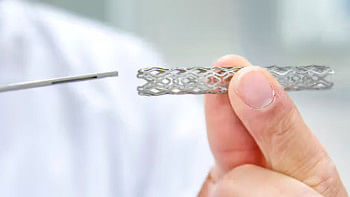Irresistible Radiance

Pearls are a true labour of love, although not human, as it is the oysters that nourish the infiltrating granules until the irritants become a real piece of beauty. Dewdrops filled with moonlight once fell into the ocean and became pearls when oysters swallowed them, says an Arab legend.Yet, anonymous remains the person who first cut open an oyster and found the first pearl, but the charm of this natural jewel has captured the fancy of the beauty conscious from all over the world, perhaps since time immemorial. Just look at all the surviving royal portraits, and even those terracotta figurines on the walls of ancient temples. And what are the gates of heaven studded with? You guessed it—pearls!
But just like all things of rarity, natural pearls were and remain considerably expensive, and thus used to be only afforded by royalty, and the rich nobility, although pearl hunters remained from humble fishing villages, with amazing free deep-diving capabilities, and often suffered a lot of abuse. Just delve a bit into the pearling slave trade patronised by colonisers, particularly the Spanish.
Despite the rather ironic connection of the cruel practice of slavery and the perfect innocent iridescence associated with pearls, it is no wonder that its sheer lustre has held many a heart captive.
|
"Pearls were once seen as a bit dated – perhaps the preserve of an older generation, but we've seen a omplete change in how they are viewed. A younger fashion set is now completely at home wearing classic pearl earrings, and you're as likely to see them in nightclubs and premieres as you are at Ascot or the Epsom Derby,"
Jean GhikaHead of Jewelry in the UK and Europe of Bonhams, which sells more jewelry than any other auction house, said to Forbes. |
Many a king in royal portraits can be seen wearing a crown resplendent in gleaming pearls, side by side with other bright jewels, or even in just their own splendour. Also, the luxurious clothes favoured by nobles and royals often featured strings or arrangements of pearls stitched onto them. The single string of pearls presented to society debutantes represented their purity and innocence.
From Vermeer's Girl with a Pearl Earring, to the portraits of Marie Antoinette or Queen Victoria, there is no end to the adoration that painters have shown for the pearl as a jewel, as well as an aid to show the play of light and luminescence. Not that the allure of pearls is confined to women; men were fascinated by them, too. Vermeer in fact used them in no less than 11 of his 35 (known) paintings, with the "tear drop" earring appearing in eight of them.
These rare gems were made more accessible by Mikimoto's ground-breaking discovery of pearl farming. Also, technology to make realistic versions of the rarer gem has made it more omnipresent in fashion trends for the past half century.
Pearls have also remained a constant piece of fascination in popular culture and the fashion spheres, and the faux variety were practically revolutionised after Coco Chanel famously flaunted her multi-layered ropes of different lengths-- her signature style. Her endorsement was a life boon to the faux variety.
Endorsed by modern icons such as Jackie Kennedy as part of her everyday wear as the First Lady, the graceful Queen Elizabeth and the late Princess Diana, many of whose favoured pieces are now sported by the Duchess Katherine, Michelle Obama, Angelina Jolie and even tennis star Serena Williams off the court, the classic remains solidly entrenched into the fashion preferences of the graceful modern woman—for pearls are forever.
Photo: Sazzad Ibne Sayed
Model: Riba
Jewellery: Noor Pearl House
Location: Four Points by Sheraton, Dhaka
Wardrobe: Jahin Khan
Make-up: Farzana Shakil's Makeover Salon
Styling: Sonia Yeasmin Isha





Comments